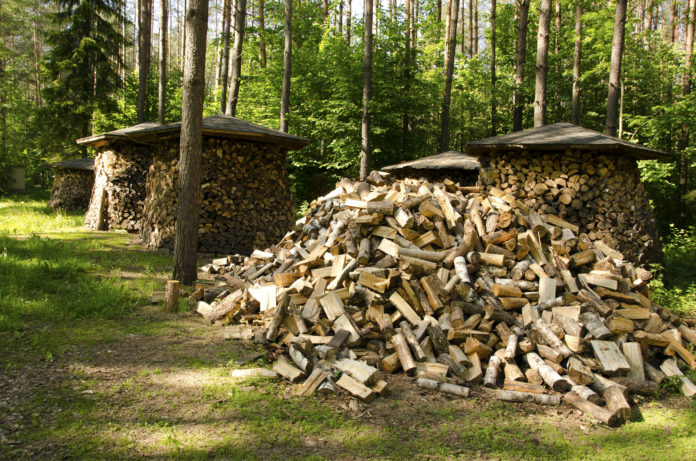Whether you have a wood burning fireplace inside your home, or a wood burning fire pit outside, keeping enough wood around is key to building an easy and robust fire at the drop of a hat. However, perhaps you have found that some wood burns better than other wood. Why is that? And what can you do to ensure that your woodpile is properly stacked and maintained? Does it matter?
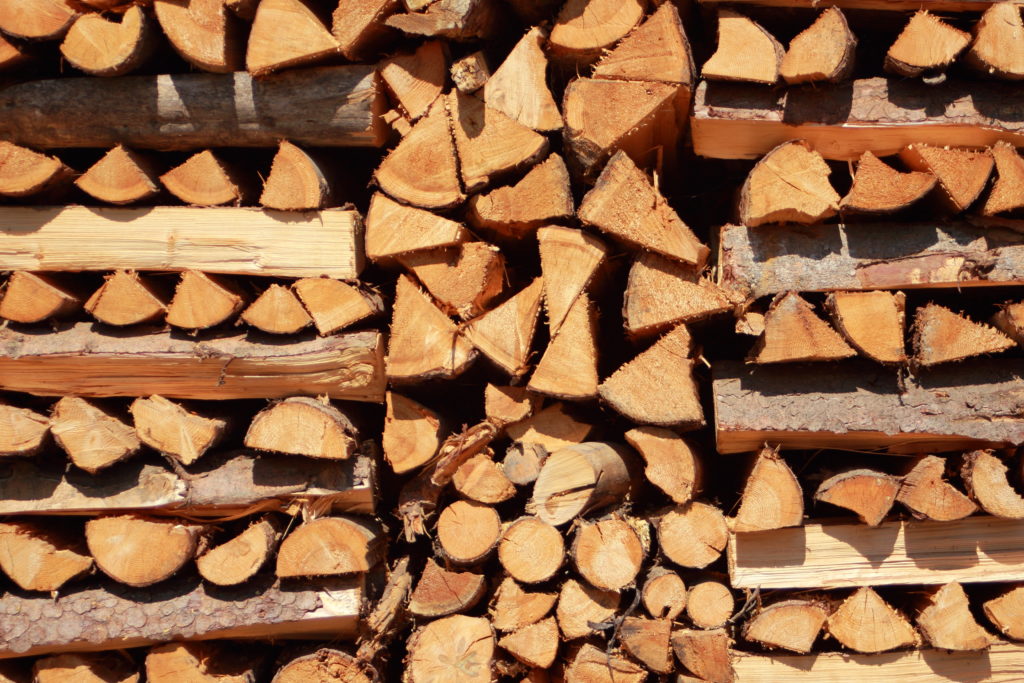
In a word, yes: your woodpile matters.
- Make sure the wood in your pile is dry and not too green. Depending on the variety of wood, this can take anywhere from one to two full seasons to properly dry out. If you try to burn wood that is still green, you will get easily frustrated by the excess smoke. Not only that, but burning green wood will accelerate the creosote build-up inside your chimney and could lead to a chimney fire. But how can you tell that your wood is seasoned enough for efficient burning?
- Faded color
- Weight: dried out wood is lighter (because of loss of moisture) than green wood
- Shape: split wood dries out faster than whole logs
- Dried out wood is easier to split than green wood
- Bark falls off more easily
- Cracks in the wood
- Sound: dry wood sounds more hollow and wet wood makes more of a thud when knocked
- Green wood smells stronger than dry wood
- Locate your woodpile away from your home and other structures. Wood piles attract all sorts of critters and if the pile is next to a building, chances are those critters will eventually work their way into your home. If you WANT termites, this is a great way to ensure getting them. Some areas also prohibit stacking wood against a home as it is a fire hazard.
- Other positioning variables to consider: If possible, position your wood pile so that the prevailing winds can continue to more effectively dry out the exposed surface. Also, a roof that covers your wood pile and protects it from excess moisture is ideal.
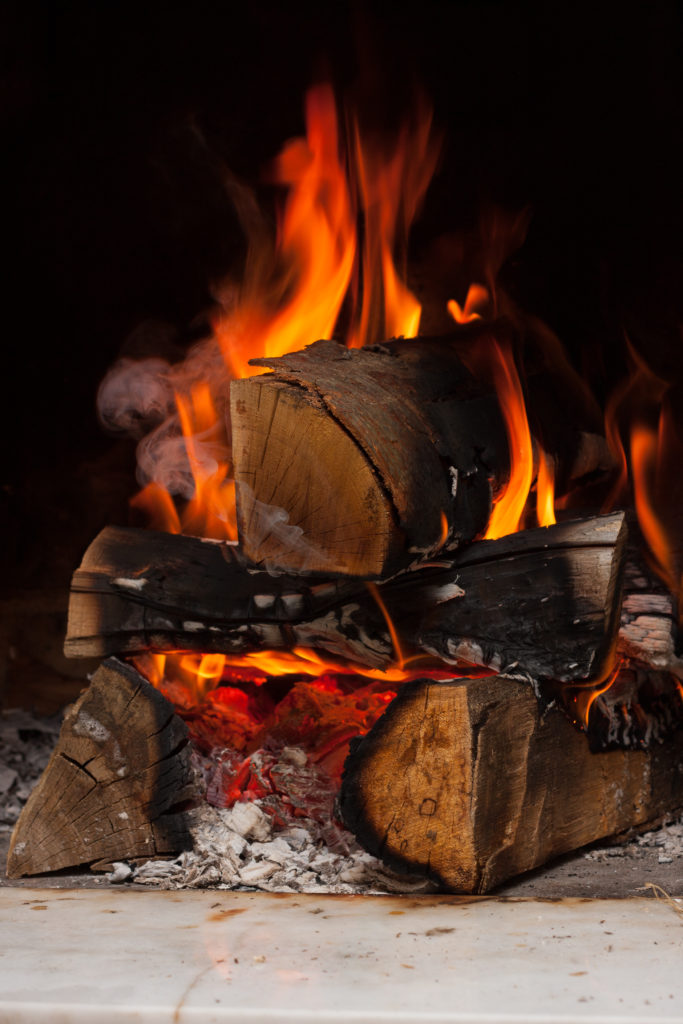
Building a wood pile:
A few things you will want to remember about constructing your wood pile
- The pile needs to be raised off of the ground to prevent moisture from seeping up from below; you can use pallets or poles to provide the necessary foundation and ventilation
- Stack logs that are already split to optimize drying. Split logs are also easier to fit into wood stoves, firepits, and fireplaces.
- Expose the cut sides to air flow
- Tight stacking might look more aesthetically pleasing, but it is best to stack wood loosely to optimize circulation, with space large enough for a mouse to run through.
- For the most stability, stack wood in a criss-cross pattern
- While you will store your main woodpile away from the home, you will want an easy way to carry the logs into the house and you will want an easy way to store a week’s worth of wood close to the fireplace.
- Keep in mind that you want to use the old wood before the new wood, so avoid stacking new wood on top of old wood, otherwise, your life is going to get unnecessarily complicated.
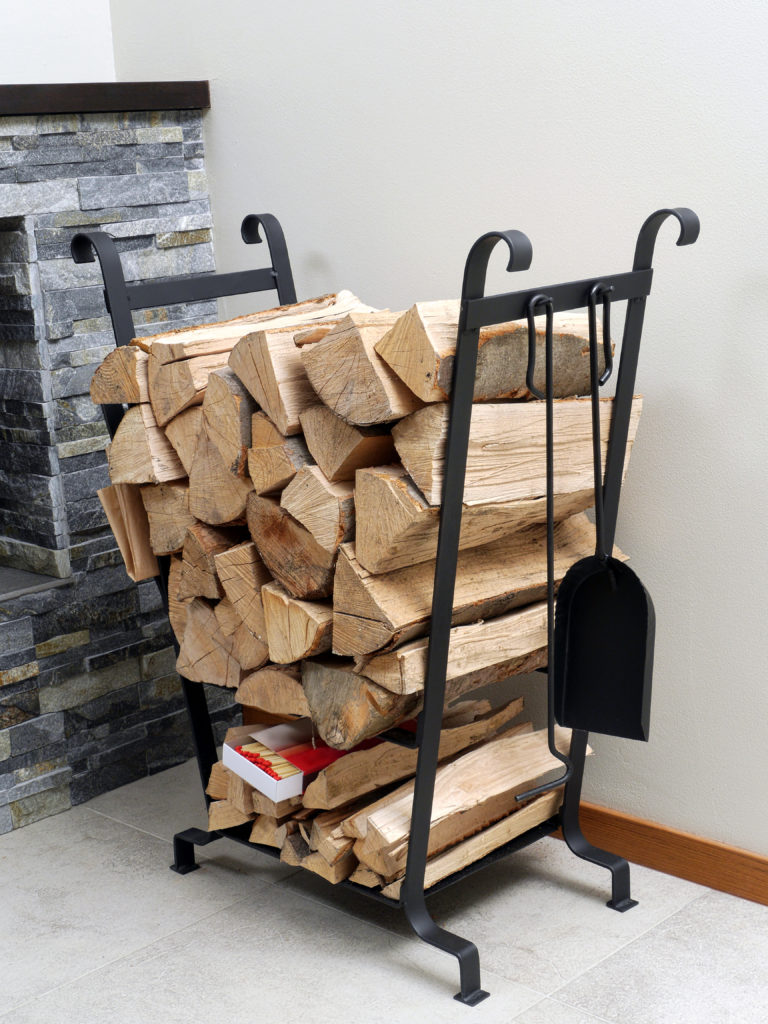
What wood burns the best?
While more expensive than softwoods, seasoned hardwoods are denser and will give you more bang for your buck by burning hotter and longer than other varieties. Seek out maple, oak, ash, birch, and various fruit trees. These types of wood will also minimize creosote build-up in your chimney. Keep in mind that if you buy hardwoods this year, you likely need to wait to burn them until the following year.
Bonus: Best way to start a roaring wood fire
- Use caution and follow safety protocols
- Make sure you clean out the old ashes
- Crumble up a few sheets of newsprint in the grate
- Pile a handful of small kindling on top of the paper
- Criss-cross several pieces of split hardwood on top of the kindling with enough air to circulate around the logs
- Make sure your flue is open (if you are inside)!
- Light the newspaper at both ends of the grate. This should set of a chain reaction in which the kindling catches followed by the larger logs
- Use tongs to add additional logs as needed when the fire burns down
- When you are ready for the fire to be done, let it burn down as much as possible. Use your poker to disperse and spread out the embers. Then, spread what ash you can over the embers to suffocate sparks. If you really want to accelerate the process, spray the embers with water or sprinkle with baking soda. Either way, stay vigilant for a few minutes to make sure no sparks reignite before you leave it unattended
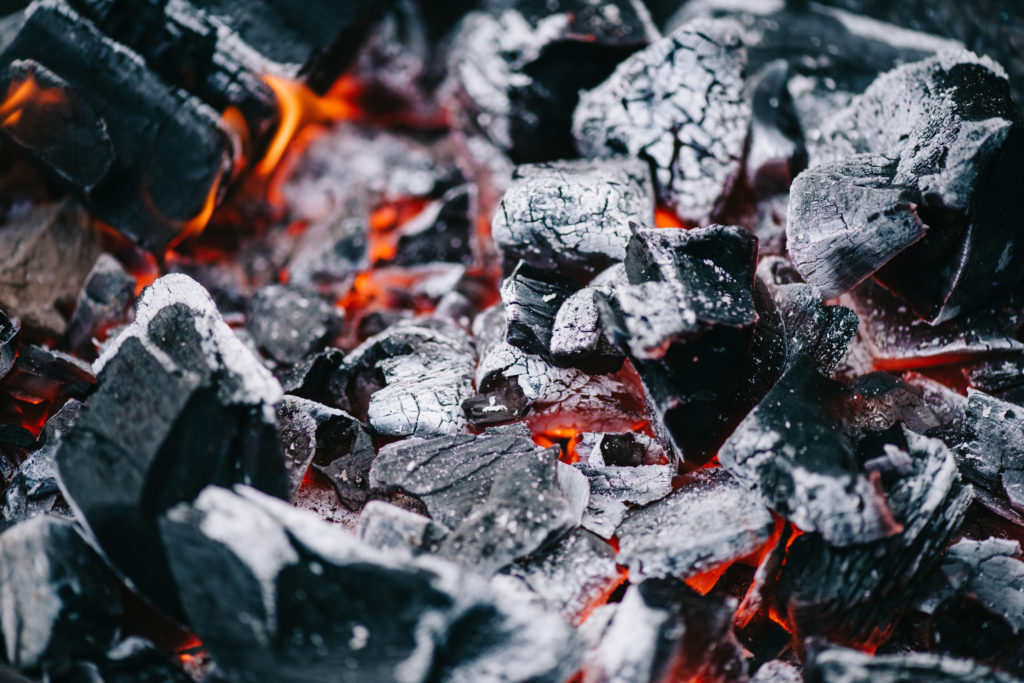
Need some practice?
Eager to put this new wood knowledge to work but lack a functional wood burning fireplace or space for a firepit in your yard? Our REALTORS here at F.C. Tucker Emge REALTORS® are ready and willing to help you find your next dream home so you can live your best life. Give us a call today and Let’s Talk!

